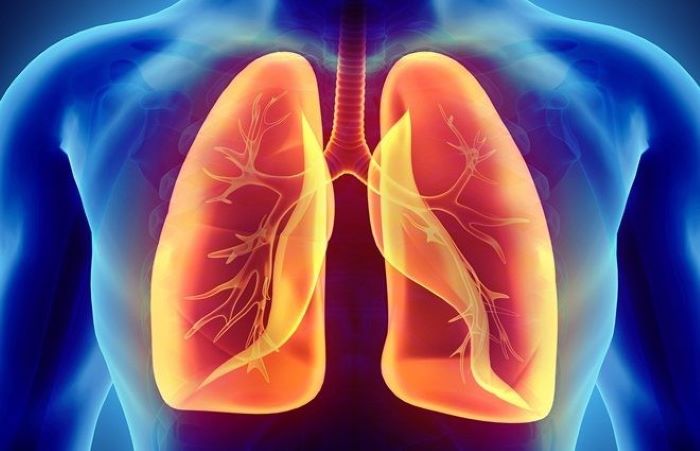
You know, I’ve been around the block a few times and seen my share of physical ups and downs. Heck, after years in the industrial field, I know a thing or two about back pain. If you’re anything like me, then back pain isn’t just a mere annoyance—it’s an unwelcome guest that can affect your daily life.
But did you know that increased oxygen intake might be the key to alleviating that nagging pain in your back? Yes, and here’s why. When your body has more oxygen, it can reduce inflammation and promote healing. But before we delve deep into the details, let me give you a resource that could be a game-changer. If back pain has been bothering you, I highly recommend checking out the program Unlock Your Spine. It’s a holistic approach to healing that combines physical therapy, stretching, and mindfulness. It’s worth a look, trust me.

Why Oxygen Matters
Your body needs oxygen. From aiding cellular functions to keeping your brain sharp, oxygen plays a vital role. But here’s a kicker – oxygen can reduce inflammation in the body. Think about it: inflammation is basically your body’s response to injuries or threats. But when inflammation runs rampant, it can cause pain, especially in the back. This is where increased oxygen intake steps in. When your body gets the oxygen it needs, it can better manage inflammation, promoting faster healing.
1. Breathing Exercises: Breathing exercises aren’t just for yogis. Deep breathing techniques can be particularly beneficial. By filling your lungs completely and exhaling slowly, you can optimize the amount of oxygen entering your bloodstream. If you’re curious about supporting your overall health with techniques like this, you should check out this great guide on how to support your health with probiotics and good bacteria.

2. Posture Check: You ever notice how you’re slumping in your chair or hunching your shoulders? Poor posture doesn’t just make you look less confident; it can hamper your breathing. Sit up straight and keep your spine aligned, and you’ll find that you can breathe more deeply and easily.

3. Aerobic Exercise: Whether it’s a brisk walk, a jog, or a session on the elliptical, aerobic exercise gets your heart pumping and your lungs working. This not only boosts your oxygen levels but helps with overall cardiovascular health.
Managing Spinal Inflammation Beyond Oxygen
While increasing oxygen intake is undoubtedly a step in the right direction, there’s more you can do to manage spinal inflammation and back pain.
1. Mindful Movement: Much like the methods discussed in Unlock Your Spine, being aware of how you move can prevent strain and injury. Remember, it’s not always the heavy lifting that gets you; sometimes, it’s the wrong twist or turn.
2. Diet and Supplements: Certain foods are known to reduce inflammation. Think of omega-3 fatty acids, turmeric, and green tea. Also, hydration plays a big role. Drink up!
3. Rest and Recovery: Give your body time to heal. This might sound a bit counterintuitive, but resting doesn’t mean being inactive. It means being aware of when to push and when to pause.
I’ve been there, battling the persistent ache in the back. But with the right knowledge and resources, I found relief. And speaking of relief, if you’ve ever faced the strain of long business trips, you’d want to stay sharp. I found some pretty neat tricks on how to stay fresh and alert during long business trips.
Your back is essentially the backbone of your daily functions (pun intended). Treat it right, keep it strong, and remember that sometimes, the key to relief is as simple as taking a deep breath.
The Science Behind Oxygen and Inflammation
It’s all good and well to talk about the benefits of oxygen, but let’s delve a little deeper into the science behind it. Oxygen is essential for the process of oxidative phosphorylation, which is how our cells produce energy. This energy is vital for all body functions, especially for repairing and regenerating tissues. Inflammation, especially chronic inflammation, increases the body’s oxygen needs since repairing inflamed tissues requires extra energy. When there isn’t enough oxygen to meet this increased demand, it can exacerbate the inflammation, causing more pain and tissue damage. This cycle is especially detrimental for sensitive areas like the spine, which is why ensuring ample oxygen intake is paramount.
The Psychological Impact of Chronic Pain
Chronic pain isn’t just a physical ailment—it bears a significant psychological burden. When pain persists, it can lead to feelings of anxiety, depression, and hopelessness. The mental toll of dealing with daily pain can be exhaustive. But here’s the thing: when you improve your physical state, there’s often a ripple effect on your mental well-being. Combining increased oxygen intake with other therapies can not only relieve spinal inflammation but can also play a pivotal role in improving your overall mood and mental health.
Alternative Therapies to Consider

While we’ve extensively discussed the role of oxygen, it’s essential to know there are other complementary therapies to consider. Acupuncture, for instance, has been used for centuries to alleviate various ailments, including back pain. Physical therapies, such as chiropractic adjustments and massages, can also help in realigning the spine and reducing muscular tension. Meditation and mindfulness practices not only relieve the mental stress associated with chronic pain but also, in some cases, help patients better manage and interpret their pain levels. It’s always a good idea to consult with professionals and potentially integrate multiple therapies for a holistic approach to back health.
